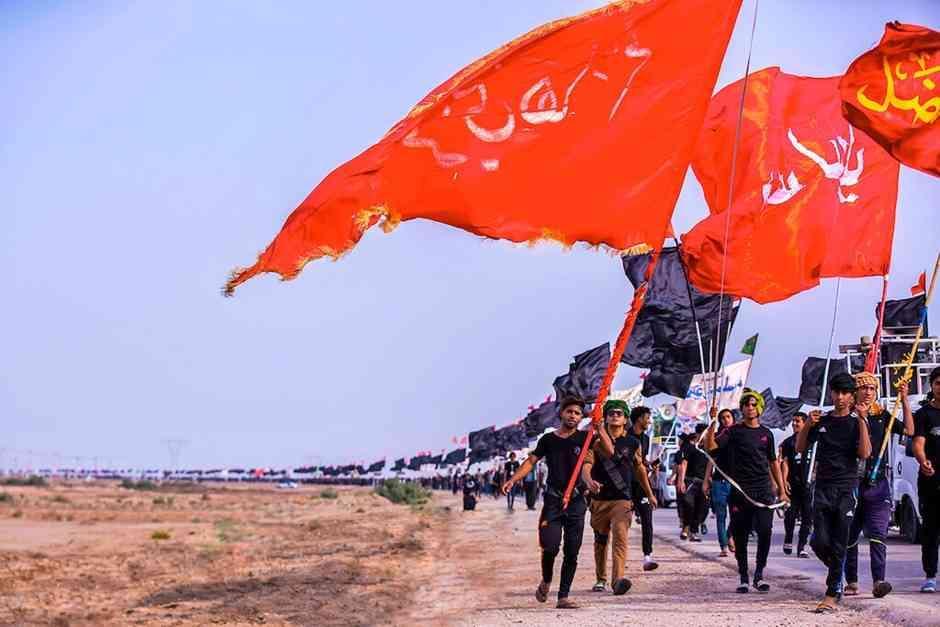Africa-Press – Malawi. Today, almost 1 400 years after it started, the Day of Arbaeen is remembered by millions of people around the world. Typically, on this day people organise large marches in cities across the world to symbolise the eternal nature of Imam
Hussain’s (as) revolution and to show they stand for social justice, compassion and dignity. In recent years, a tradition of walking 80km from Najaf in Iraq (the resting place of Imam Ali (as) the father of Imam Hussain (as) to Karbala has been reignited. Every year since, the number has been rising steadily from 17 million pilgrims to at least 25 million. People from all walks of life and all corners of the globe make the journey, despite the imminent threat of terrorists who have vowed to attack the pilgrims.
Along the 80km stretch from Najaf to Karbala in Iraq volunteers distribute free food and drinks to those undertaking the pilgrimage, as well as offering places to relax, wash and sleep. Arbaeen Day is now the largest annual peaceful gathering in the world, with numbers set to increase significantly every year.
Every year in the month of Safar — the second month of the Islamic lunar calendar — the barren deserts of Iraq turn into the stage of humanity’s greatest expression of love and solidarity. The Arbaeen Pilgrimage, marking 40 days after the martyrdom anniversary of Imam Hussein ibn Ali (AS), draws tens of millions from around the globe, making it the largest peaceful assembly in the world. Today, Arbaeen stands as an international grassroots movement. Every year, millions walk eighty kilometres from Najaf to Karbala, some even beginning from Basra. This is not merely a geographical pilgrimage but a spiritual and ideological migration. Participants include Shia, Sunni, Christian, Sabian, Jewish, Hindu and even the atheist. All unite under Hussain’s banner. His message transcends sect; it addresses humanity, not factions.
Imam Hussein, the third Shia Imam and grandson of Prophet Muhammad (PBUH), was martyred in 680 AD during the Battle of Karbala. Refusing to pledge allegiance to Yazid, the ruler of the time, Imam Hussein stood against tyranny despite facing an army of 40,000 with only a small band of family and loyal companions. His martyrdom — alongside his infant son and loved ones — became a timeless symbol of courage, justice, and sacrifice.
The meaning behind Arbaeen
In Arabic, “Arbaeen” means “forty,” signifying the end of the traditional 40-day mourning period. For Shia Muslims, the pilgrimage is more than a religious ritual — it is a pledge to uphold the values Imam Hussein died defending. The chant “Labaik ya Hussein” (“I am here, O Hussein”) echoes along the road, symbolizing the pilgrims’ readiness to continue his mission of truth and justice.
Arbaeen is not merely remembrance of martyrs; it is a warning to the Pharaohs of our age. To treat it as a hollow tradition would betray Hussain’s sacrifice. But to link it with awareness, affection, justice, and freedom means Arbaeen will remain an earthquake beneath the seat of oppression for centuries to come.
Let us recall the eternal Qur’anic injunction: “O you who believe! Stand firmly for justice, as witnesses to God, even if it be against yourselves, your parents, or your kin…” (Qur’an 4:135) This was the injunction Hussain embodied; this is the instruction every pilgrim reciting the Ziyarat of Arbaeen reaffirms.
The Karbala paradigm provides a model for ethics, resistance, and identity throughout time. Scholars compare Hussain’s martyrdom to Christ’s sacrifice for justice, and note that pilgrims on this path undergo spiritual transformation as they endure hardship and unity in communal pain. Arbaeen, moreover, ranks among the world’s largest annual gatherings, with over twenty‐two million participants in 2023 alone, drawn from across the globe in service and devotion.
A global message of unity
What sets Arbaeen apart is its inclusivity. Visitors of all faiths — Muslims, Christian, and many from other religions — walk together, share meals and stories. National flags from every continent wave in harmony, sending a powerful message: Imam Hussein’s legacy belongs to all humanity.
For many, Arbaeen is also a time of learning and dialogue. Pilgrims exchange ideas, discuss social and political issues, and strengthen bonds across cultures. It’s a living example of peaceful coexistence in today’s world.
Arrival in Karbala
For the exhausted travelers, the sight of Karbala’s golden domes is overwhelming. Tears flow as they enter Bayn al-Haramayn, the space between the shrines of Imam Hussein and his brother, Hazrat Abbas (AS). Here, they join mass mourning ceremonies, recite prayers, and perform acts of charity — each pilgrim deepening their spiritual connection.
The Arbaeen Pilgrimage is not just the world’s largest annual gathering — it’s a moving display of selflessness, unity, and resistance against oppression. In the words of Prophet Muhammad (PBUH): “Hussein is from me, and I am from Hussein. Allah loves those who love Hussein.”
As millions return home, they carry with them not only the memories of a sacred journey but also a renewed commitment to live by the principles Imam Hussein gave his life to defend.
Why it matters
The Arbaeen Pilgrimage is not just the world’s largest annual gathering — it’s a moving display of selflessness, unity, and resistance against oppression. In the words of Prophet Muhammad (PBUH): “Hussein is from me, and I am from Hussein. Allah loves those who love Hussein.”
As millions return home, they carry with them not only the memories of a sacred journey but also a renewed commitment to live by the principles Imam Hussein gave his life to defend.
For More News And Analysis About Malawi Follow Africa-Press






